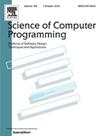软件项目管理工具在孟加拉国IT行业的实践
IF 1.4
4区 计算机科学
Q3 COMPUTER SCIENCE, SOFTWARE ENGINEERING
引用次数: 0
摘要
软件项目管理(SPM)的实现已经彻底改变了软件开发行业。多年来,软件项目管理工具(spmt)已经被全球的软件公司广泛采用。虽然在过去的几十年里,孟加拉国采用spmt的速度很慢,但越来越多的公司转向它。随着孟加拉国努力跟上世界其他国家的步伐,了解这个国家如何管理软件开发是很重要的。从两个角度对spmt的采用进行了调查,这使得这项工作分为两个部分进行。在第一部分中,系统的文献综述试图从全球角度,具体国家的角度,最后从孟加拉国的角度探讨SPM和spmt的使用。第二部分通过对软件公司进行52个问题的全面调查,调查了spmt在实际领域的实际使用情况。该分析基于87家参与公司的回复。主要调查结果显示,近50%的公司使用spmt进行项目管理,Jira成为最受欢迎的工具,占有最大的市场份额,约为45%。我们的研究确定了10个常用的SPMT功能。用户报告说,缺乏知识、成本和感知必要性阻碍了SPMT的采用。所获得的见解有助于研究人员和政策制定者进一步加强这些工具的使用,并促进该部门改进实践,以实现可持续增长。本文章由计算机程序翻译,如有差异,请以英文原文为准。
Software project management tools in practice in IT industry of Bangladesh
The implementation of Software Project Management (SPM) has revolutionized the software development industry. For many years, Software Project Management Tools (SPMTs) have been widely adopted by software companies globally. Although the adoption of SPMTs has been slow in Bangladesh over the past few decades, there has been a growing trend of companies turning towards it. As Bangladesh strives to keep up with the rest of the world, it is important to understand how software development is managed in the country. The adoption of SPMTs has been investigated from two perspectives, which made this work being conducted in two parts. In the first part, a systematic literature review attempts to explore the use of SPM and SPMTs from a global perspective, a country-specific perspective, and finally, a Bangladeshi perspective. The second part investigates the actual use of SPMTs in the real field through conducting a comprehensive survey, comprising 52 questions, on software companies. The analysis was based on 87 responses from participant companies. The key findings reveal that nearly 50 % of the companies employ SPMTs for project management, with Jira emerging as the most popular tool, holding the largest market share at about 45 %. Our study identified 10 frequently used SPMT functionalities. Users reported that lack of knowledge, cost, and perceived necessity hampered SPMT adoption. The insights gained can benefit researchers and policymakers in enhancing the use of these tools further and fostering improved practices in the sector for sustainable growth.
求助全文
通过发布文献求助,成功后即可免费获取论文全文。
去求助
来源期刊

Science of Computer Programming
工程技术-计算机:软件工程
CiteScore
3.80
自引率
0.00%
发文量
76
审稿时长
67 days
期刊介绍:
Science of Computer Programming is dedicated to the distribution of research results in the areas of software systems development, use and maintenance, including the software aspects of hardware design.
The journal has a wide scope ranging from the many facets of methodological foundations to the details of technical issues andthe aspects of industrial practice.
The subjects of interest to SCP cover the entire spectrum of methods for the entire life cycle of software systems, including
• Requirements, specification, design, validation, verification, coding, testing, maintenance, metrics and renovation of software;
• Design, implementation and evaluation of programming languages;
• Programming environments, development tools, visualisation and animation;
• Management of the development process;
• Human factors in software, software for social interaction, software for social computing;
• Cyber physical systems, and software for the interaction between the physical and the machine;
• Software aspects of infrastructure services, system administration, and network management.
 求助内容:
求助内容: 应助结果提醒方式:
应助结果提醒方式:


